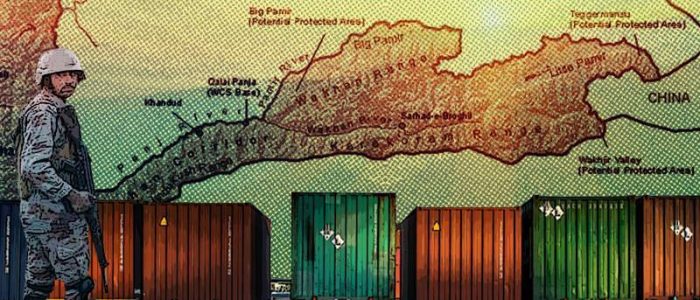By Major (R) Haroon Rasheed, Defense and Strategic Analyst – Specializing in South Asian Military Dynamics and Technology.
Tucked between the world’s highest mountain ranges lies a narrow stretch of land that holds immense geopolitical significance — the Wakhan Corridor. Though often overlooked, this remote and rugged region of northeastern Afghanistan is once again drawing international attention due to its strategic location connecting South Asia, Central Asia, and China.
For more such Opinions & Blogs, click here.
The Wakhan Corridor extends roughly 350 kilometers (220 miles) eastward from Afghanistan’s Badakhshan province to China’s Xinjiang region. Its width varies from about 13 kilometers at its narrowest point to 60 kilometers at its widest, covering an area of nearly 10,000 square kilometers. The corridor is surrounded by Tajikistan to the north, Pakistan’s Gilgit-Baltistan to the south, China to the east, and the rest of Afghanistan to the west. Enclosed by the towering Pamir, Hindu Kush, and Karakoram mountain ranges, it is one of the most isolated and least populated regions in the world.
The origins of the corridor date back to the 19th century “Great Game” — when British India and Tsarist Russia sought to create a buffer zone between their empires. The narrow Wakhan strip was intentionally carved out to prevent direct contact between the two rivals. Today, more than a century later, that same buffer zone could transform into a bridge of connectivity between regions.
Strategically, the Wakhan Corridor serves as a potential link between China, Pakistan, and Afghanistan, with wider connections to Central Asia. For China, the corridor offers a direct — though challenging — land route to Afghanistan, complementing its Belt and Road Initiative (BRI) and providing an alternative access point for trade and energy routes. For Pakistan, the corridor enhances the scope of CPEC (China-Pakistan Economic Corridor), opening avenues for trade through Gilgit-Baltistan into Central Asia.
For Afghanistan, the corridor represents hope for economic revival. If developed, it could connect Afghanistan to Chinese markets and beyond, providing an outlet for trade, energy, and communication. Its location could also foster regional cooperation on border security, counterterrorism, and development.
However, challenges remain — the terrain is extremely rugged, infrastructure is minimal, and the harsh weather limits movement for most of the year. Yet, with the right vision and coordinated regional will, the Wakhan Corridor could transform from a forgotten frontier into a symbol of connectivity, cooperation, and stability in one of the world’s most sensitive geopolitical zones.
The world’s attention may have shifted elsewhere, but the Wakhan Corridor remains a silent witness to history — and possibly, a key to Asia’s future.
For more such Opinions & Blogs, click here.
Major (R) Haroon Rasheed is a defense and strategic analyst specializing in South Asian military dynamics, deterrence strategy, and defense modernization. He is a member of the Research and Evaluation Cell for Advancing Basic Amenities and Development (RECABAD).
Stay tuned to Baaghi TV for more. Download our app for the latest news, updates & interesting content!






